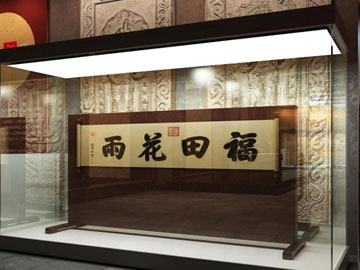What Is the Importance of Museum Storage?
- 17 Mar, 2023
- 3332 views
Choosing the right materials to display and store your items is one of the most important ways you can care for your collection.
Storage and display materials contain chemicals, many of which can be unstable and can react with museum objects. Incorrect mixing of materials and objects can lead to corrosion, discolouration and overall deterioration through harmful vapours or direct contact. High temperatures and relative humidity can accelerate the deterioration of the object.
The museum only has so much space to showcase their many great artefacts, art and interactive displays to the public. In addition, to keep things fresh and relevant, they often cycle through their collections to keep people coming back for more. Organised and easily accessible museum storage is vital to long-term success.
Maximising museum storage space can be a challenge anywhere - from the Louvre, the world's most popular museum, which attracted 8.1 million visitors in 2017, to the world's smallest museum in a 134-foot shed in Superior, Arizona.

Low-oxygen(Constant Humidity) And Clean Showcase
"On average, at any given time, only three to five percent of any museum's permanent collection is available for display in public gallery spaces. This leaves the majority of the museum's collection in storage," says the Western Association of Museums.
In addition, museum collections are growing. Even as many museums are turning digital, there is still a great need for adaptable, customised museum storage. After all, the hundreds of millions of items in storage need to be accessible:
Curators need access to stored collections to determine what should be shown next, what can be loaned where, and to come up with exhibition ideas.
Researchers and educators may request objects for research and teaching purposes.
Donors and museum members may be invited to visit the behind-the-scenes storage room.
Restorers will need ongoing access to objects in storage to check their conservation status.

Constant Humidity Showcase
Maximising museum storage
While many museum staff are focused on maximising the display space enjoyed by the public, many are also focused on maximising the storage space behind the scenes. Adaptable, bespoke products such as mobile carrels, bulk shelving, hanging slides with shelves or drawers, and enclosed cabinets with pallets can make a big difference.
The Delta Air Lines Transportation Heritage Museum is housed in a hangar that was built in the 1940s. Despite the size of the museum - over 68,000 square feet - there is only 4,000 feet of space available in the museum archives. With new items coming in every day and the demand for space quickly outstripping available storage, the museum was running into problems. "At some point, we weren't even sure what we actually had," says Tina Seetoo, archives assistant.
In designing the storage space that would best suit the space, the museum added that
An 11-range mechanically assisted high-density storage system with open shelving
Closed-door storage for historic airline clothing, including uniforms, hats, purses and shoes
Textile shelving for banners and flags
Cantilevered shelving for the museum's extensive collection of books.
CNRO's storage experts are available to consult on the best products to meet your museum's needs. We understand storage conservation and preservation, but we will continue to improve efficiency and cost-effectiveness in meeting your needs for archival shelving, preservation cabinets, high-bay mobile storage and other storage for rare books, framed artwork, textiles, artefacts, flat documents, and more.
- Category:
- Arts & Culture
- No comments



